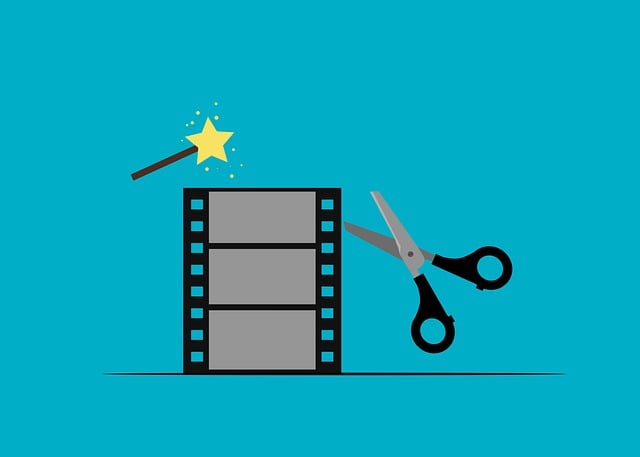DivX and WebM are influential video formats that have shaped digital media. Introduced in 1998, DivX offered superior compression, while WebM, an open-source option, emerged later with advanced codecs like VP8 and VP9. Converting DivX to WebM is essential for seamless media integration, as it allows content creators and consumers to access videos across diverse devices and platforms. This process involves specialized software that leverages advanced algorithms for efficient compression without quality loss, ensuring compatibility with modern web browsers and media players. The conversion facilitates high-definition content delivery, appealing to a broad audience through user-friendly tools and professional-grade converters. WebM's widespread adoption promises to unify the digital landscape, enhancing online experiences for all content consumers.
In an era dominated by digital media, the quest for seamless compatibility and optimal quality has driven technological innovations. One such breakthrough is the conversion from DivX to WebM, offering a more efficient and accessible format. This article delves into the intricacies of these codecs, exploring their respective strengths and weaknesses. We uncover why converting DivX to WebM is crucial, highlighting improved compression, wider support, and enhanced accessibility for digital content creators and consumers alike. Prepare to embark on a journey through the technical nuances and future implications of this game-changing transition.
Understanding DivX and WebM: A Brief Overview

DivX and WebM are two video container formats that have played a significant role in shaping digital media technology. DivX, introduced in 1998, was one of the earliest popular formats for compressing video data, enabling efficient storage and streaming of high-quality video content. It gained widespread adoption due to its ability to deliver excellent picture quality while maintaining relatively small file sizes.
Over time, WebM emerged as a competitor, offering an open-source alternative with support for advanced codecs like VP8 and VP9. This format is particularly notable for its use in online video platforms, allowing for seamless conversion DivX to WebM, making it easier for content creators and consumers to access and enjoy videos across different devices and platforms.
The Need for Conversion: Limitations and Compatibility Issues

In today’s digital age, the seamless integration of various media formats is paramount for a smooth online experience. However, this quest for universality often leads to compatibility hurdles, especially when dealing with older codecs like DivX. The need to convert DivX to more compatible and modern formats such as WebM has become increasingly pressing.
WebM, with its open-source nature and robust support across modern browsers, offers a promising solution. However, converting DivX to WebM isn’t always straightforward due to the unique features and limitations of both codecs. Ensuring optimal quality preservation while maintaining compatibility requires careful consideration and innovative technology, underscoring the pioneering nature of this digital media transformation.
Unlocking the Potential: Benefits of WebM Over DivX

The advent of WebM has significantly shifted the landscape of digital media, offering a revolutionary alternative to formats like DivX. One of the key advantages lies in its versatility and compatibility; WebM is an open-source format supported by major web browsers, ensuring seamless playback across different platforms. This accessibility paves the way for easier conversion of DivX files to WebM, providing content creators and users with a more unified experience.
Furthermore, WebM delivers enhanced video quality while maintaining efficient file sizes. By utilizing modern compression techniques, it reduces the overall size of videos without sacrificing visual fidelity, making it ideal for web streaming and online distribution. This improvement over DivX is particularly notable in high-definition content, ensuring viewers enjoy crisp, clear pictures without buffering delays or reduced performance.
The Technical Aspect: How Conversion is Achieved

The process of converting DivX to WebM involves a complex interplay of codecs and compression techniques, pushing the boundaries of digital media technology. This pioneering achievement is made possible through specialized software that decodes the DivX format, extracts the underlying video and audio data, and then re-encodes it into the more modern and efficient WebM codec. The key lies in utilizing advanced algorithms to compress the data without losing significant quality, ensuring the output remains true to the original content.
This conversion is not merely a straightforward process of changing file extensions; it’s a meticulous procedure that demands precision and expertise. By leveraging powerful processing capabilities, the software is able to analyze every frame of the video, adaptively adjusting compression settings to preserve fine details and maintain smooth playback. The end result is a WebM file that retains the high-quality attributes of its DivX predecessor, opening up new possibilities for web distribution and compatibility with a wide range of modern media players.
Tools and Software: Exploring Options for Seamless Conversion

In the realm of digital media, achieving seamless conversion between formats is paramount, especially when transitioning from older standards like DivX to newer web-friendly options such as WebM. The journey begins with an exploration of diverse tools and software designed to facilitate this process. Thankfully, a plethora of options are available, catering to various user needs and skill levels. From professional-grade converters that offer intricate control over output settings, to user-friendly interfaces optimized for everyday users, the market provides robust solutions.
One prominent tool that has gained traction is the ability to convert DivX to WebM seamlessly. This conversion path ensures compatibility with a wide array of web platforms and devices, making it ideal for content creators looking to expand their reach. The process involves selecting the desired output settings, including resolution, bitrate, and encoding type, to match the requirements of modern streaming platforms, thereby enhancing video quality and ensuring efficient file sizes.
Impact and Future Prospects: Revolutionizing Digital Media Accessibility

The conversion from DivX to WebM marks a significant milestone in digital media technology, with profound implications for both the present and future of online content consumption. By facilitating the seamless conversion of video files into a more accessible format, this innovation promises to democratize digital media, making high-quality content available to a broader audience without the need for specialized hardware or software. This is particularly beneficial for users with older devices or those who prefer simpler viewing experiences.
Looking ahead, the future prospects for this technology are promising. As streaming platforms continue to evolve and more users opt for online entertainment, the ability to easily convert and share videos will play a pivotal role in enhancing user experience. Moreover, the widespread adoption of WebM could lead to a more unified digital media ecosystem, reducing compatibility issues and ensuring that everyone can enjoy the latest multimedia content seamlessly.
The conversion from DivX to WebM represents a significant milestone in digital media technology, offering improved accessibility and compatibility. By overcoming limitations and ensuring cross-platform functionality, this process paves the way for enhanced online video experiences. As we look ahead, the future of digital media looks brighter, with WebM’s efficient compression and wider support promising to revolutionize how we consume content. The ability to seamlessly convert DivX to WebM is a game-changer, fostering inclusivity and ensuring that everyone can enjoy high-quality videos without technical barriers.
